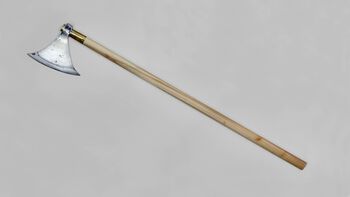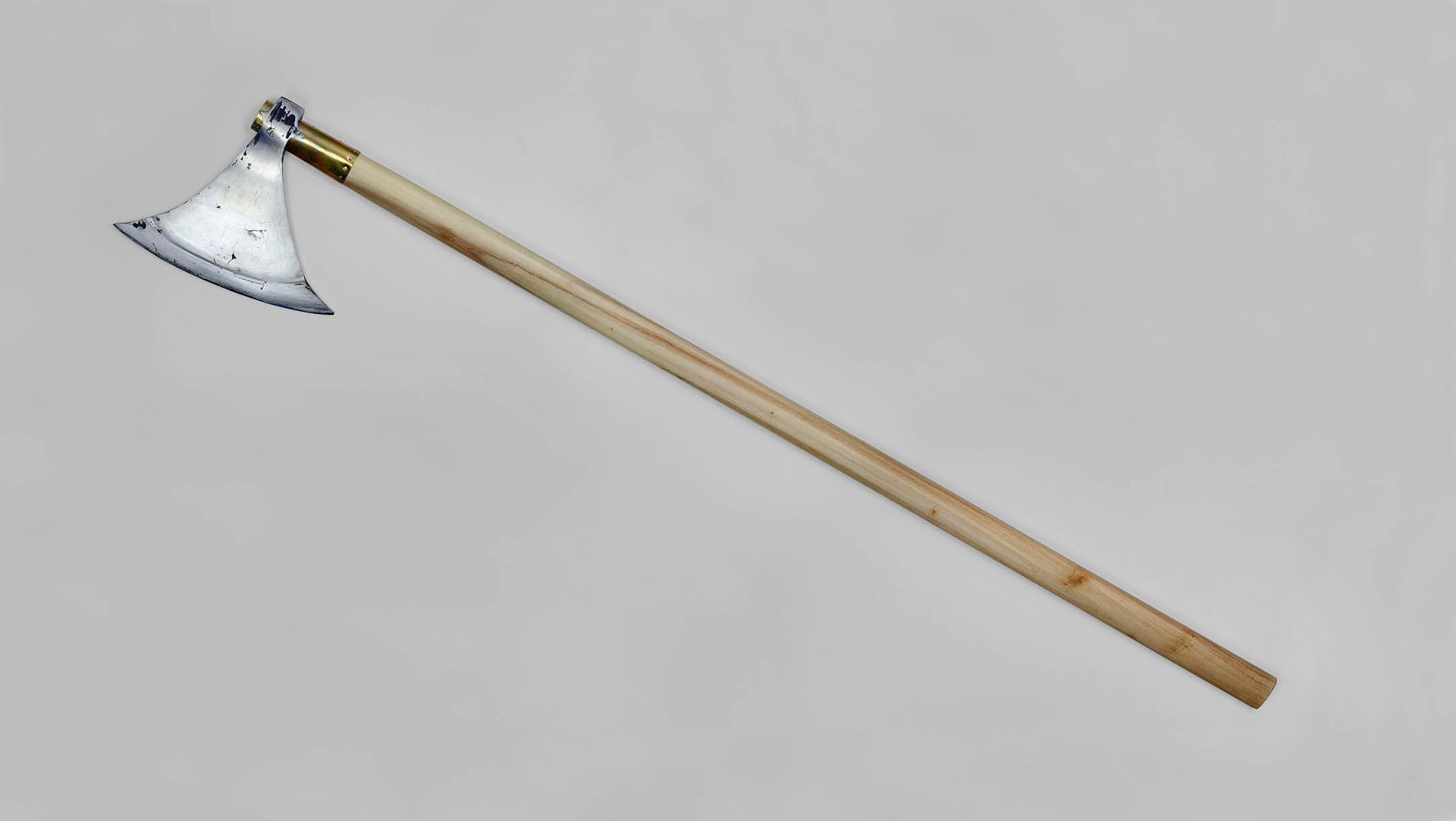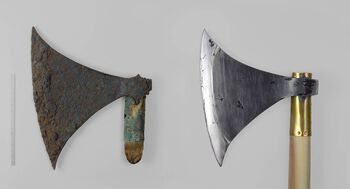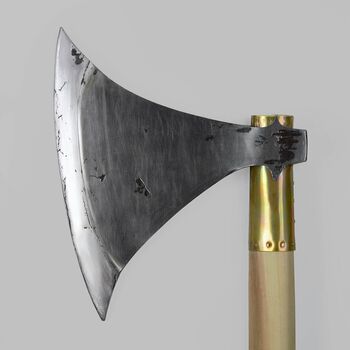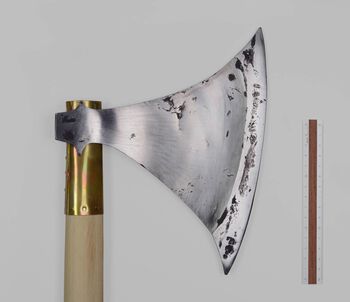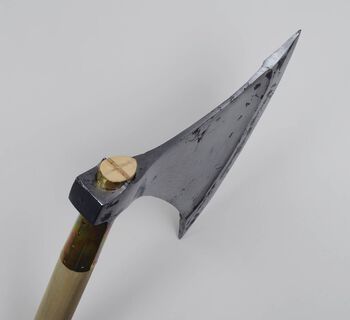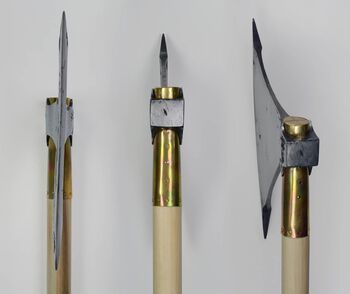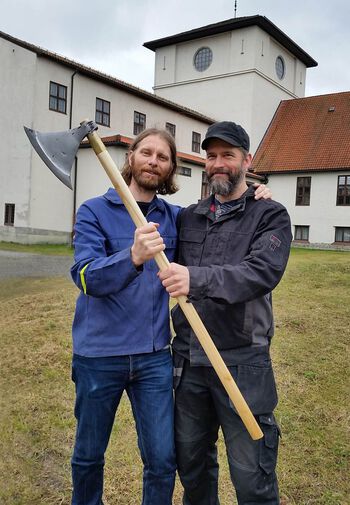The replica
The replica axe ended up with a 24.4 cm cutting edge, a 117 cm haft and a total weight of 1.5 kilograms, including the haft. The axe head weighs c. 900 grams. The replication cannot be said to be perfect, but the end result must at the very least be considered an acceptable copy.
The original and its estimated weight
The length of the original’s cutting edge is 25.3 cm while the axe head weighs 551 grams. The difference in weight is an important issue. While the original is much lighter than the replica, the replica’s dimensions are very similar to the original. When looking at x-rays of the original we found that very little metallic iron have been preserved, and only in the thickest parts of the axe – immediately in front of the haft hole and in the thickened area behind the cutting edge. Today the axe blade primarily consists of a type of dense, black corrosion called magnetite (Fe3O4) with a specific weight of 5.18 g/cm³. This is much lighter than metallic iron (Fe) which has a specific weight of 7.87 g/cm³. Based on this the axe head’s original weight can be calculated to approximately 800 grams. It is however possible to arrive at a more precise weight by establishing the volume of the original axe head, either by submerging it in water and calculating the resultant displacement, or by running a 3D scan, and then multiplying the volume by the specific weight of iron.
Sheath
A moment’s inattentiveness could easily result in the keen cutting edge of the axe causing harm. We therefore chose to make a sheath, so that the replica axe could be made safe whilst not in use. This experimental sheath is not based on a spesific archaeological find, but is somewhat comparable to axe sheath finds from the viking age town of Hedeby.
Literature
- Bore Jegdić, Suzana Polić-Radovanović, Slavica Ristić, Ana Alil (2012) Corrosion of archaeological artefacts made of forged iron. Association of Metallurgical Engineers of Serbia, Vol 18 (3) 2012, s.233-240.

